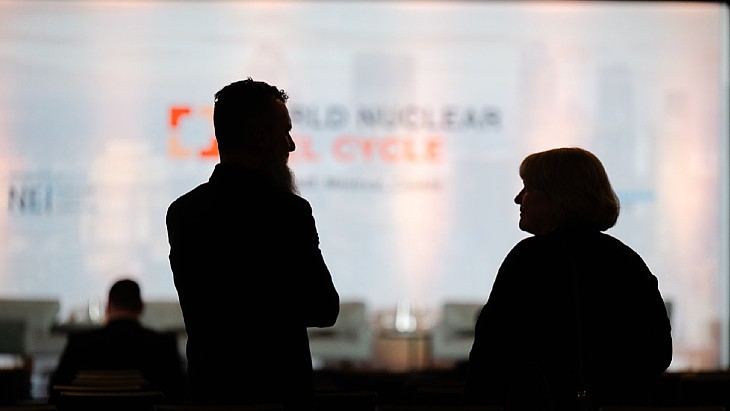Fuel innovation means research reactor can transition from HEU
.jpg)
The innovative U-Mo fuel is being developed by Framatome's CERCA Research and Innovation Laboratory at Romans-sur-Isère in France in cooperation with the university, which contracted Framatome in 2019 to develop the U-Mo foils manufacturing technique to support the existing technology of embedded foils in a cladding of aluminum. CERCA is Framatome's subsidiary for the fabrication of fuel elements for research reactors.
The French company said it has developed the main component of a high-quality U-Mo fuel, manufactured the prototype, established a qualification procedure, and installed a pilot line in record time and within budget. The first U-Mo foils have now been manufactured and irradiation of the first monolithic U-Mo fuel plate prototype is scheduled for September.
"Producing innovations for safe and reliable operations of research reactors is at the heart of what we do every day," said François Gauché, vice president of CERCA at Framatome. "Developing this sophisticated fuel while creating knowledge useful for future manufacturing was a significant challenge."
The 20 MWt FRM II, operating since 2005, is one of the most effective and modern sources of high-flux neutrons in the world. The reactor is not used to generate electricity, but to provide a neutron source for industrial and scientific use. Its neutrons are also used to produce medical radioisotopes and for the doping of high-purity silicon for the semiconductor industry, and the reactor has a facility for teletherapy of malignant tumours using fast neutrons.
However, FRM II currently uses fuel enriched to over 95% uranium-235 to generate its dense neutron flux - and such high-enriched uranium (HEU) is seen as a nuclear proliferation risk. TUM has agreed with the Federal Republic of Germany and the Bavarian State - who finance the reactor - to work towards converting it to fuel with lower enrichments when a suitable fuel is available. This is also a condition of the reactor's operating licence, which was issued in 2003.
Monolithic U-Mo is the only fuel which can enable the reactor to perform as intended while using a low enrichment of less than 20% uranium-235, according to TUM. This is possible due to the high uranium density in the fuel, Framatome said.
TUM researchers in 2022 completed independently verified calcluations to show that conversion of the reactor to use such a fuel would be theoretically possible, establishing the foundations to meet the state regulatory requirements to discontinue the future use of HEU FRM II. This plan has now received approval from the Bavarian ministry.
Bavarian Science Minister Markus Blume said operating "Germany's most powerful research reactor with the most advanced low-enriched fuel" would secure future neutron research capabilities. "It is clear to us: strong research and an openness to technology without ideological blinkers are prerequisites for a good and secure future," he said.
TUM President Thomas Hofmann said the university was "pleased about this positive reaction from politicians" adding that the research reactor was an "unrivalled tool" for science.
The operation of FRM II is not affected by Germany's decision to end the commercial use of nuclear power for electricity generation earlier this month.
_49098.jpg)
_57190.jpg)
_70526.jpg)
_75453.jpg)






_50521.jpg)

